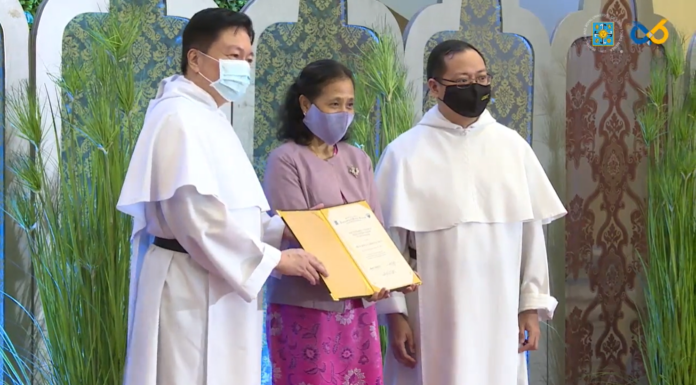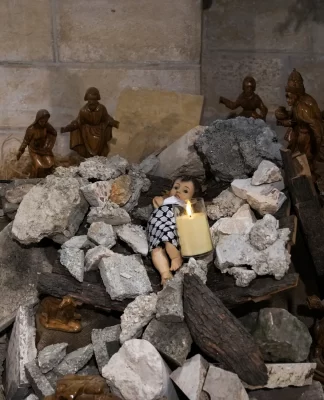Art. 1 – It is licit for very member of the faithful to pray to God for healing. When this is organized in a church or other sacred place, it is appropriate that such prayers be led by an ordained minister.
Art. 2 – Prayers for healing are considered to be liturgical if they are part of the liturgical books approved by the Church’s competent authority; otherwise, they are non-liturgical.
Art. 3 –
1. Liturgical prayers for healing are celebrated according to the rite prescribed in the Ordo benedictionis infirmorum of the Rituale Romanum and with the proper sacred vestments indicated therein.
2. In conformity with what is stated in the Praenotanda, V., De aptationibus quae Conferentiae Episcoporum competunt of the same Rituale Romanum, Conferences of Bishops may introduce those adaptations to the Rite of Blessings of the Sick which are held to be pastorally useful or possibly necessary, after prior review by the Apostolic See.
Art. 4 –
1. The Diocesan Bishop has the right to issue norms for his particular Church regarding liturgical services of healing.
2. Those who prepare liturgical services of healing must follow these norms in the celebration of such services.
3. Permission to hold such services must be explicitly given, even if they are organized by Bishops or Cardinals, or include such as participants. Given a just and proportionate reason, the Diocesan Bishop has the right to forbid even the participation of an individual Bishop.
Art. 5 –
1. Non-liturgical prayers for healing are distinct from liturgical celebrations, as gatherings for prayer or for reading of the word of God; these also fall under the vigilance of the local Ordinary.
2. Confusion between such free non-liturgical prayer meetings and liturgical celebrations properly so-called is to be carefully avoided.
3. Anything resembling hysteria, artificiality, theatricality or sensationalism, above all on the part of those who are in charge of such gatherings, must not take place.
Art. 6 – The use of means of communication (in particular, television) in connection with prayers for healing, falls under the vigilance of the Diocesan Bishop and the norms established by the Congregation for the Doctrine of the Faith in the Instruction of March 30, 1992.
Art. 7 –
1. Without prejudice to what is established above in art. 3 or to the celebrations for the sick provided in the Church’s liturgical books, prayers for healing – whether liturgical or non-liturgical – must not be introduced into the celebration of the Holy Mass, the sacraments, or the Liturgy of the Hours.
2. In the celebrations referred in the previous number, one may include special prayer intentions for the healing of the sick in the general intercessions or prayers of the faithful, when this is permitted.
Art. 8 –
1. The ministry of exorcism must be exercised in strict dependence on the Diocesan Bishop, and the Letter of the Congregation for the Doctrine of the Faith of September 29, 1985, and the Rituale Romanum.
2. The prayers of exorcism contained in the Rituale Romanum must remain separate from healing services, whether liturgical or non-liturgical.
3. It is absolutely forbidden to insert such prayers of exorcism into the celebration of the Holy Mass, the sacraments, or the Liturgy of the Hours.
Art. 9 – Those who direct healing services, whether liturgical or non-liturgical, are to strive to maintain a climate of peaceful devotion in the assembly and to exercise the necessary prudence if healings should take place among those present; when the celebration is over, any testimony can be collected with honesty and accuracy, and submitted to the proper ecclesiastical authority.
Art. 10 – Authoritative intervention by the Diocesan Bishop is proper and necessary when abuses are verified in liturgical or non-liturgical healing services, or when there is obvious scandal among the community of the faithful, or when there is a serious lack of observance of liturgical or disciplinary norms.
The Sovereign Pontiff John Paul II, at the Audience granted to the undersigned Cardinal Prefect, approved the present Instruction, adopted in Ordinary Session of this Congregation, and ordered its publication. www.vatican.va













